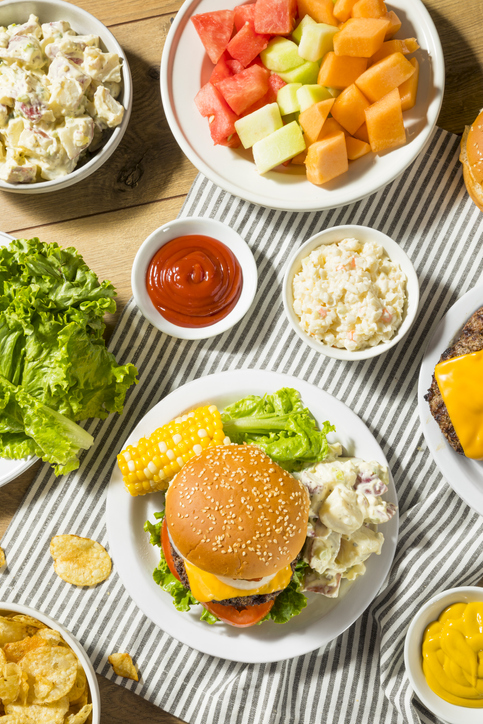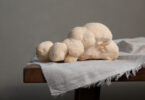Potato salad, grilled corn on the cob and a side of salmonella. Nothing spoils a summer cookout more than an afternoon of vomiting and a midnight run to the emergency room with food poisoning. The U.S. Centers for Disease Control and Prevention (CDC) estimates that 48 million Americans develop food-borne illness each year. Of those, 128,000 require hospitalization and 3,000 die. Summer barbecues and picnics are prime breeding grounds for germs, but it doesn’t have to be that way. In most cases, food-borne illness is easily preventable. A few simple precautions can help keep your family and friends safe and healthy—and coming back for more.
Avoid Cross Contamination and Avoid Food Poisoning
Raw meat contains harmful bacteria that can contaminate surfaces and other foods. Always keep raw meat and poultry away from produce and other ready-to-eat foods. Use different dishes and utensils for raw and cooked meats. Any juices from meat should be cleaned up immediately.
During food preparation, clean countertops, cutting boards and utensils often, especially after handling raw meat.
Sing Happy Birthday and Kill Bacteria
Once your hands are contaminated, it doesn’t take long to spread germs around. You touch the refrigerator door handle, touch a tomato, and before you know it, somebody is sick. It’s not enough to wash when you begin food preparation. Wash your hands often, especially after handling raw meat.
To really tackle those germs, wash your hands for at least 20 seconds. That’s about as long as it takes to sing the “Happy Birthday” song twice.
Soap and water is best, but if you’re going to be outdoors without access to a sink, bring disposable hand wipes. That’s especially important after using a portable toilet. Hand sanitizer containing at least 60 percent alcohol won’t completely eliminate germs, but it will kill many. Follow label instructions.
Do Not Enter: Temperature Danger Zone!
If you don’t have a food thermometer, buy one. It’s well worth the investment to ensure that your food doesn’t linger in the “temperature danger zone” of 41-140 degrees Fahrenheit. Bacteria thrive in those temperatures.
“Any food that remains in the temperature danger zone for more than two hours should be discarded,” says ServSafe Certified Registered Dietitian Samantha Hauswirth.
When serving outdoors in temperatures above 90 degrees Fahrenheit, food should never sit out for more than one hour.
Keep Your Cool and Turn Up the Heat
Keep cold foods at 40 degrees Fahrenheit or below. Coolers should be kept out of direct sunlight and opened only when necessary.
“When prepping cold foods, such as pasta salad, it’s beneficial to have designated dishes for the finished product,” says Ms. Hauswirth. “This will make refrigerator storage fast and easy so you can keep food safe until it’s ready to be served.”
Refrigerate leftovers promptly. The longer you leave them sitting around, the more you encourage growth of harmful bacteria.
“When grilling meat, an internal temperature of 165 degrees Fahrenheit will kill most bacteria,” advises Hauswirth.
Don’t let hot foods cool off; keep them hot until you’re ready to serve.
When In Doubt, Throw It Out
No matter how tasty that fresh garden salad looks, if you saw it hanging out with a raw chicken breast, do yourself and everyone else a favor and get rid of it.
When you’re a guest and you see unsafe food practices, pull the host aside explain your concerns. A minute of embarrassment might prevent a roomful of people from getting food poisoning.
In Case You Didn’t Know…
- Bacteria can live on the outside of melons and other produce. Slicing into them can transfer bacteria to the inside.
- Always wash fruit and veggies thoroughly before cutting.Foods should be marinated in the refrigerator, not at room temperature.
- A full cooler will keep food safe longer than one that is partially filled, but don’t just plop food on top of ice. Instead, surround food with ice.
An afternoon of fun with family and friends beats checking into the hospital any day. Follow safe food handling practices when you fire up the grill or pack that picnic basket—and let the summer fun begin.
Updated July 1, 2019


